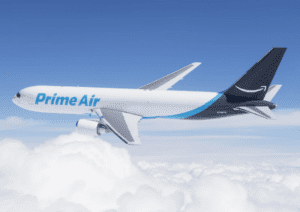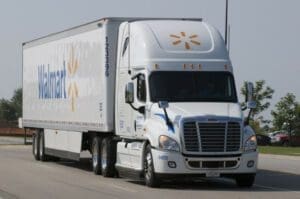
The US Department of Transportation (DOT) has mandatory drug tests that any safety-sensitive employee must complete. Truck drivers are routinely tested during their employment for a variety of drugs, ranging from marijuana, cocaine and methamphetamine to oxycodone, morphine and ecstasy. One drug that seems to be missing from the DOT’s list is fentanyl. Fentanyl is a synthetic opioid that is 50 to 100 times stronger than morphine. Pharmaceutical fentanyl was developed for pain management treatment of cancer patients. Because of its powerful opioid properties, Fentanyl is added to heroin to increase its potency, or be disguised as highly potent heroin. Federal drug regulators could soon announce plans to add fentanyl to a drug testing panel that would detect use of the dangerous drug among safety-sensitive federal employees after adoption by the DOT. The intent to test for the deadly drug has been in the planning stages since 2018 but is awaiting approval of a final rule by the U.S. Department of Health and Human Services authorizing oral fluid testing and proposed revisions to allow timely changes to drug testing panels. And now on to this week’s logistics news.
- Amazon in the news:
- Some Walmart employees can more than triple their wages by becoming truck drivers
- Survey: Lunar New Year could have bigger supply chain impact than last year
- Small package-delivery companies as alternative to UPS, FedEx
- Uber working with auto makers for customized EVs for deliveries
- New suppliers race to plug in to electric car market
- Ocean container rates cool slightly from historic highs
![]() Amazon announced a new prescription perk for U.S. Prime members, hoping to boost subscriptions and attract users to its pharmacy service. The add-on, called RxPass, will allow Prime members to get as many drugs as they need from a list of 50 generic medications to treat more than 80 common chronic conditions, such as high blood pressure, anxiety and diabetes. The service costs $5 a month per person, and delivery is free. The company launched its own online pharmacy in 2020, a service that was born out of its acquisition of PillPack in 2018. Amazon introduced, then shuttered, a telehealth service called Amazon Care, and announced in July it would acquire boutique primary care provider One Medical. Amazon also offers a Prime prescription savings benefit, which offers a discount of up to 80 percent on generic medications and up to 40 percent on brand-name prescriptions.
Amazon announced a new prescription perk for U.S. Prime members, hoping to boost subscriptions and attract users to its pharmacy service. The add-on, called RxPass, will allow Prime members to get as many drugs as they need from a list of 50 generic medications to treat more than 80 common chronic conditions, such as high blood pressure, anxiety and diabetes. The service costs $5 a month per person, and delivery is free. The company launched its own online pharmacy in 2020, a service that was born out of its acquisition of PillPack in 2018. Amazon introduced, then shuttered, a telehealth service called Amazon Care, and announced in July it would acquire boutique primary care provider One Medical. Amazon also offers a Prime prescription savings benefit, which offers a discount of up to 80 percent on generic medications and up to 40 percent on brand-name prescriptions.
 On the heels of last week’s announcement of the launch of Prime Lite in India, the company is continuing to focus its attention in the region. Amazon has launched Amazon Air, its dedicated air cargo fleet, in India as the e-commerce giant bulks up its logistics infrastructure in the key overseas market where it has deployed more than $6.5 billion. The retailer has partnered with the Bengaluru-based cargo airline Quikjet to launch its maiden air freight service in the country, which it said will enable the firm to speed up its delivery. Amazon, which is utilizing the Boeing 737-800 for the service, said it will initially use Amazon Air to deliver goods in Delhi, Mumbai, Hyderabad and Bengaluru. An Amazon executive described the launch of Amazon Air as a “huge step forward for the aviation industry,” without explaining how. Amazon launched Air in the U.S. in 2016 with over three dozen Boeing freighter aircrafts. It also briefly tested the program in the U.K. India is the third market where Amazon has launched its freight service. The company said Air fleet includes more than 110 flights across 70 destinations worldwide and it has invested “hundreds of millions of dollars” in its air logistics capabilities.
On the heels of last week’s announcement of the launch of Prime Lite in India, the company is continuing to focus its attention in the region. Amazon has launched Amazon Air, its dedicated air cargo fleet, in India as the e-commerce giant bulks up its logistics infrastructure in the key overseas market where it has deployed more than $6.5 billion. The retailer has partnered with the Bengaluru-based cargo airline Quikjet to launch its maiden air freight service in the country, which it said will enable the firm to speed up its delivery. Amazon, which is utilizing the Boeing 737-800 for the service, said it will initially use Amazon Air to deliver goods in Delhi, Mumbai, Hyderabad and Bengaluru. An Amazon executive described the launch of Amazon Air as a “huge step forward for the aviation industry,” without explaining how. Amazon launched Air in the U.S. in 2016 with over three dozen Boeing freighter aircrafts. It also briefly tested the program in the U.K. India is the third market where Amazon has launched its freight service. The company said Air fleet includes more than 110 flights across 70 destinations worldwide and it has invested “hundreds of millions of dollars” in its air logistics capabilities.
 Many Walmart hourly employees can now make a lot more cash — potentially more than triple the amount they’re bringing in now. The company announced that it is expanding its associate-to-driver program so that any Walmart worker at 439 store locations nationwide can become a truck driver after completing a 12-week course. Walmart truck drivers can make up to $110,000 per year — much more than the average annual wages of Walmart store employees, which range from $25,000 to $35,000, according to estimates from job-posting sites like Indeed, Glassdoor, and ZipRecruiter. This move comes as Walmart looks to both expand its fleet as it builds out a network of distribution centers and bring on more truck drivers during a labor shortage for the profession. And it follows the company’s announcement in April 2022 that it would bump up annual salaries for truck drivers to up to $110,000 and launch the 12-week development program for supply-chain associates in Dallas, Texas, and Dover, Delaware, to earn their commercial drivers licenses.
Many Walmart hourly employees can now make a lot more cash — potentially more than triple the amount they’re bringing in now. The company announced that it is expanding its associate-to-driver program so that any Walmart worker at 439 store locations nationwide can become a truck driver after completing a 12-week course. Walmart truck drivers can make up to $110,000 per year — much more than the average annual wages of Walmart store employees, which range from $25,000 to $35,000, according to estimates from job-posting sites like Indeed, Glassdoor, and ZipRecruiter. This move comes as Walmart looks to both expand its fleet as it builds out a network of distribution centers and bring on more truck drivers during a labor shortage for the profession. And it follows the company’s announcement in April 2022 that it would bump up annual salaries for truck drivers to up to $110,000 and launch the 12-week development program for supply-chain associates in Dallas, Texas, and Dover, Delaware, to earn their commercial drivers licenses.
 Concern about supply chain disruptions triggered by the Lunar New Year holiday that began this week is running higher this year than last, according to a survey from the German container logistics platform Container xChange. Seventy-three percent of supply chain professionals expect the event, which also known as Chinese New Year, to further disrupt the shipping industry this year, as opposed to 66 percent who said the same thing in 2022. Specifically, most respondents said the impacts they expect will include “an increase in port congestions and delays” and “delayed container journeys” soon after China reopens. That contrasts with last year’s survey results, when most industry professionals feared capacity issues and higher rates as the holiday’s aftermath. During the 15-day holiday, so many people travel to spend time with their families that many factories and logistics facilities are forced to slow down or shut their doors entirely. That effect may be multiplied further in 2023 due to China’s recent decision to lift its harsh “Zero covid” isolation and quarantine rules, freeing citizens to travel again to celebrate the “Year of the Rabbit” after years in lockdown.
Concern about supply chain disruptions triggered by the Lunar New Year holiday that began this week is running higher this year than last, according to a survey from the German container logistics platform Container xChange. Seventy-three percent of supply chain professionals expect the event, which also known as Chinese New Year, to further disrupt the shipping industry this year, as opposed to 66 percent who said the same thing in 2022. Specifically, most respondents said the impacts they expect will include “an increase in port congestions and delays” and “delayed container journeys” soon after China reopens. That contrasts with last year’s survey results, when most industry professionals feared capacity issues and higher rates as the holiday’s aftermath. During the 15-day holiday, so many people travel to spend time with their families that many factories and logistics facilities are forced to slow down or shut their doors entirely. That effect may be multiplied further in 2023 due to China’s recent decision to lift its harsh “Zero covid” isolation and quarantine rules, freeing citizens to travel again to celebrate the “Year of the Rabbit” after years in lockdown.
 Smaller parcel carriers made big gains during the pandemic handling packages that the larger players couldn’t deliver. Regional shipping companies across the U.S. are expanding their operations to pick up business from their bigger rivals, especially considering the fact that each of the big three are dealing their own issues. Specifically, smaller parcel carriers are seeking to capitalize on labor uncertainty at UPS, higher rates charged by UPS and FedEx, and growing reluctance among merchants to rely on a single carrier. The push comes as the e-commerce boom that fueled carriers’ growth has faded and inflation-weary shoppers begin to pull back on purchases. Some small carriers say that despite the slowdown, they see an opportunity to build on the gains they made during the height of the Covid-19 pandemic.
Smaller parcel carriers made big gains during the pandemic handling packages that the larger players couldn’t deliver. Regional shipping companies across the U.S. are expanding their operations to pick up business from their bigger rivals, especially considering the fact that each of the big three are dealing their own issues. Specifically, smaller parcel carriers are seeking to capitalize on labor uncertainty at UPS, higher rates charged by UPS and FedEx, and growing reluctance among merchants to rely on a single carrier. The push comes as the e-commerce boom that fueled carriers’ growth has faded and inflation-weary shoppers begin to pull back on purchases. Some small carriers say that despite the slowdown, they see an opportunity to build on the gains they made during the height of the Covid-19 pandemic.
 Uber is continuing to look at innovations to stay ahead. The company is working with auto makers to design lower-cost electric vehicles tailored for its ride-hailing and delivery businesses, part of its effort to electrify its fleet. Uber Chief Executive Dara Khosrowshahi said the company is working with manufacturers on vehicles optimized for city use, ferrying passengers and deliveries. For ride-sharing, that includes cars with lower top speeds and with seating areas where passengers can face each other. For delivery vehicles, Mr. Khosrowshahi said the company is considering smaller vehicles with two or three wheels and trunk space. Such vehicles “can get through traffic easier and have a much smaller footprint, both in terms of environmental but also traffic footprint than, let’s say, a car to go deliver groceries,” he said. The announcement comes as Uber is working to convert the fleet of vehicles its drivers use to electric by 2030 in many parts of the developed world, and in some places like London by 2025.
Uber is continuing to look at innovations to stay ahead. The company is working with auto makers to design lower-cost electric vehicles tailored for its ride-hailing and delivery businesses, part of its effort to electrify its fleet. Uber Chief Executive Dara Khosrowshahi said the company is working with manufacturers on vehicles optimized for city use, ferrying passengers and deliveries. For ride-sharing, that includes cars with lower top speeds and with seating areas where passengers can face each other. For delivery vehicles, Mr. Khosrowshahi said the company is considering smaller vehicles with two or three wheels and trunk space. Such vehicles “can get through traffic easier and have a much smaller footprint, both in terms of environmental but also traffic footprint than, let’s say, a car to go deliver groceries,” he said. The announcement comes as Uber is working to convert the fleet of vehicles its drivers use to electric by 2030 in many parts of the developed world, and in some places like London by 2025.
Speaking of EVs, the global auto industry has committed $1.2 trillion to developing electric vehicles, providing a golden opportunity for new suppliers to grab contracts providing everything from battery packs to motors and inverters. Startups specializing in batteries and coatings to protect EV parts, and suppliers traditionally focused on niche motorsports or Formula One (F1) racing, have been chasing EV contracts. Carmakers design platforms to last a decade, so high-volume models can generate large revenues for years. The next generation of EVs is due to hit around 2025 and many carmakers have sought help plugging gaps in their expertise, providing a window of opportunity for new suppliers. Mass-market carmakers often prefer to develop EV components in-house and own the technology themselves. After years of pandemic-related parts shortages, they are wary of over-reliance on suppliers. But smaller companies say there are still opportunities, particularly with low-volume manufacturers that cannot afford huge EV investments, or luxury and high-performance carmakers seeking an edge.
And finally, extra maritime container capacity is undermining the sector’s historically high freight rates as the global economy cools down from overheated pandemic panic-buying patterns, according to numbers from Xeneta, a Norwegian ocean and air freight rate benchmarking and market intelligence platform. The trend is truest for ocean freight rates from North Europe to the U.S. East Coast, with both spot and long-term contracted prices falling by around 10% since the start of the year, Xeneta said today. That price decline has pushed long-term rates below $6,000 per forty-foot equivalent unit (FEU), while spot rates are below $6,500 per FEU for the first time since December 2021. Prior to the New Year, this trade had withstood market forces with only “soft” rates declines, compared to the dramatic falls seen on other key ocean corridors since last summer. Despite that drop, container shipping prices remain strong in a long-term context.
That’s all for this week. Enjoy the weekend, and the song of the week, Heroin, from Lou Reed’s Rock n Roll Animal live album.

















